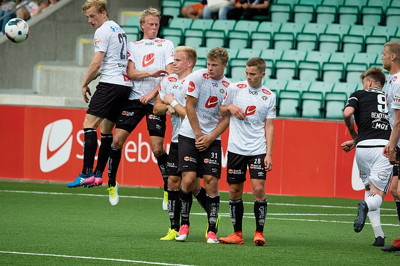
The defensive wall has been part of football almost since the sport began, so most people don’t even question it.
We’ve all grown so used to seeing players lining up alongside each other to make life difficult for the attacker who is getting ready to take a direct free-kick that we don’t ask where it came from, why it started and how it has developed over the years.
Of course, it’s likely that this is because it’s almost impossible to answer some of those questions. With football having been played since the 19th century, it’s not as if we could have a chat with the defenders who first decided to do it in order to ask them what they were thinking or whose idea it was.
Yet there’s no question that the defensive wall is a crucial part of the game, so what do we know about it?
What Is A Defensive Wall
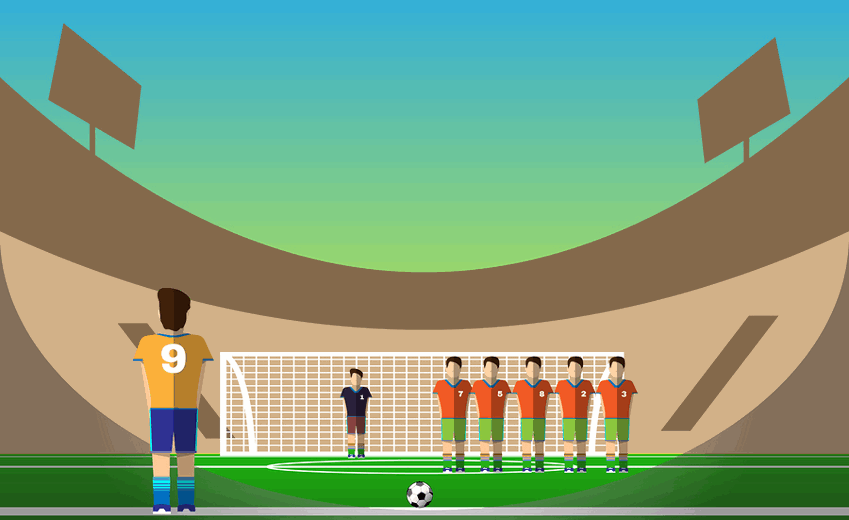
When a match referee awards an attacking a direct free-kick, the opposition team will usually line up a number of players in a wall in order to try to protect the goal.
Oftentimes the goalkeeper dictates where they want the wall to stand, often opting for a spot that will cover a part of the goal that they’d struggle to cover if the attacker aimed for it.
The job of the defensive wall is to limit the angles on goal that the attacker has available to aim for, with the wall usually jumping up as the ball is kicked in order to further limit the space.
It’s why free-kick specialists can be such an important part of the attacking team’s armoury, with the best players able to curve their shot around the wall or over it and then down in time to get the ball into that area that the goalkeeper will struggle to reach.
What The Law Says
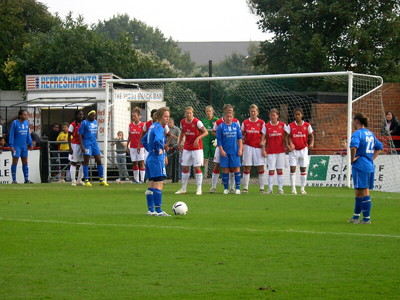
The Football Association’s rules of football don’t really say anything about the defensive wall. It outlines why direct and indirect free-kicks are given in the first place, with the likes of pushing, kicking and tripping other players being high on the list for infractions that will result in the awarding of the former.
Prior to 2019, there was nothing specific about defensive walls in the laws in terms of what defenders could or could not do. The obvious exception to this is the fact that all opposition players must be at least ten yards from the ball until the free-kick is taken.
The law on defensive walls changed in 2019, with the following being the new wording:
Where three or more defending team players form a ‘wall’, all attacking team players must remain at least 1m (1yd) from the ‘wall’ until the ball is in play.
Prior to this rule change, of course, attacking players would attempt to stand within the wall and try to stop of the defenders from being able to block the ball. They would peel away in order to open up the space or else do something else to stop the defending players from being able to aid the goalkeeper.
Attempts To Be ‘Clever’ With The Wall
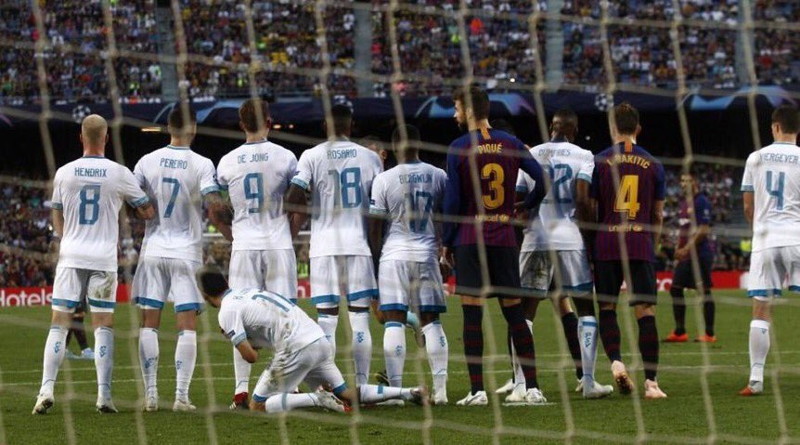
There have been numerous different attempts to be clever with the defensive wall over the years. Most free-kicks tend to be shot high, encouraging the defending team to jump into the air in order to try to stop the ball from making progress towards the goal. After all, getting the ball high enough to get over a player but then come down low enough to trouble to goalkeeper is a very difficult skill to master.
Players tend to jump a little, whilst also pointing their toes down and having their legs together to ensure that the ball can’t go underneath or through them. Of course, wishing that to be the case and ensuring that it is are two different things, and so more than one team over the years has employed one of its players to crouch or lie down behind the wall in order to stop the attacking player from kicking the ball underneath it.
The idea behind that tactic is to stop the opposition from being able to shoot the ball along the floor and into the back of the net, which has been done countless times over the years. There’s nothing wrong with it in the laws of the game, as long as the player doesn’t deliberately use their hands or arms to stop the ball’s progress.
The Role Of The Defender In The Wall
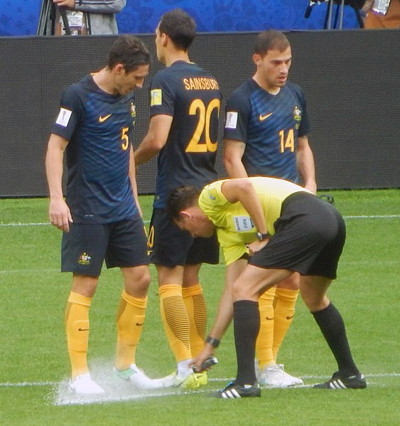
The defenders are there in the wall in order to both make life difficult for the attacker as they strike the ball by limiting the angle, but they’re also there in the hope that the ball strikes them. This is obviously a curious desire to have, with the former United States of America national team defender Alexi Lalas saying that there is a ‘psychopathic’ element to players who are selected to go in the wall as they have to ‘want to take the hit’.
Opposition teams have long looked out for cracks in the wall thanks to a player’s lack of bravery when faced with a ball hurtling towards their face. Knowing that a player might not jump as high as the others or is likely to turn their body to the side as the ball comes in is something that the world’s best free-kick takers will look to exploit. Bravery is important, therefore, not just because it might stop the ball passing but also because it will take a possible advantage away from the attacker.
In 1993 the USA team coach at the time, Bora Milutinovic, attempted to both reduce the need to depend on the bravery of players and ask more questions of the attackers. He split the wall, leaving a gap in the middle that the goalkeeper would cover and then two walls either side to cover the goal. Unsurprisingly, the USA soon found out why this hadn’t been tried before when opposition attackers simply stood in the middle to block the goalkeeper’s line of sight. That took away the USA’s advantage of a better line of sight, meaning that a good idea in theory became a poor one in practice.
Goalkeepers And The Defensive Wall
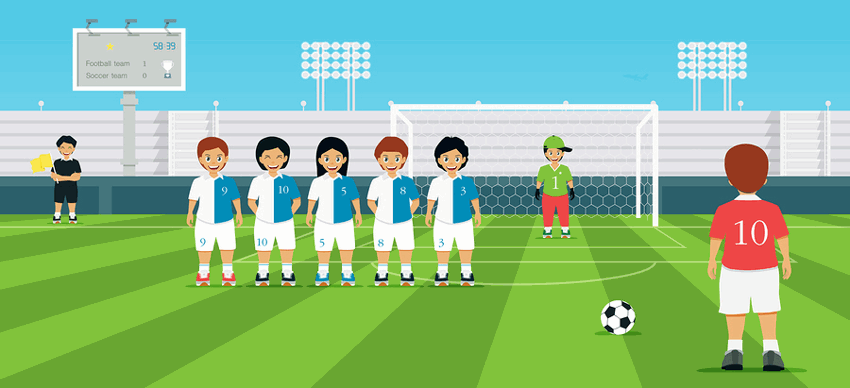
The role of the goalkeeper when it comes to defending a free-kick is simple enough. They are the last line of defence and it is their job to tell the players how to line up in order to limit the angles for the attacker taking the free-kick. The problem is that the more players there are in front of them, the harder it is for them to get a clear line of sight and therefore to know where the ball is likely to end up. If they can’t see what the ball is doing once the attacker has kicked it, it’s tricky to know where to jump to stop it from going into the back of the net.
Oliver Kahn, the former German goalkeeper, once tried to reduce this problem by telling his teammates not to form a wall for most free-kicks. The only time he wanted a wall in front of him was when the free-kick was in a position close to the goal, meaning that the attacker could hit the ball quite hard and therefore score almost through brute force as much as anything else. Kahn backed his own ability as a shot-stopper to save the free-kick as long as he could see the ball and there was more chance of that happening without a wall.
Of course, the lack of wall might give the goalkeeper a better line of sight but it also increases the amount of space that the attacking player has to aim at. Rather than needing to figure out the geometry of getting the ball up and over the ball and then back down again into the line of the goal, the taker could just pick and choose where to aim the ball and then attempt to hit it there, backing their own ability to score. Unsurprisingly, this method of defending free-kicks didn’t last long for Kahn once he had conceded a few times.
